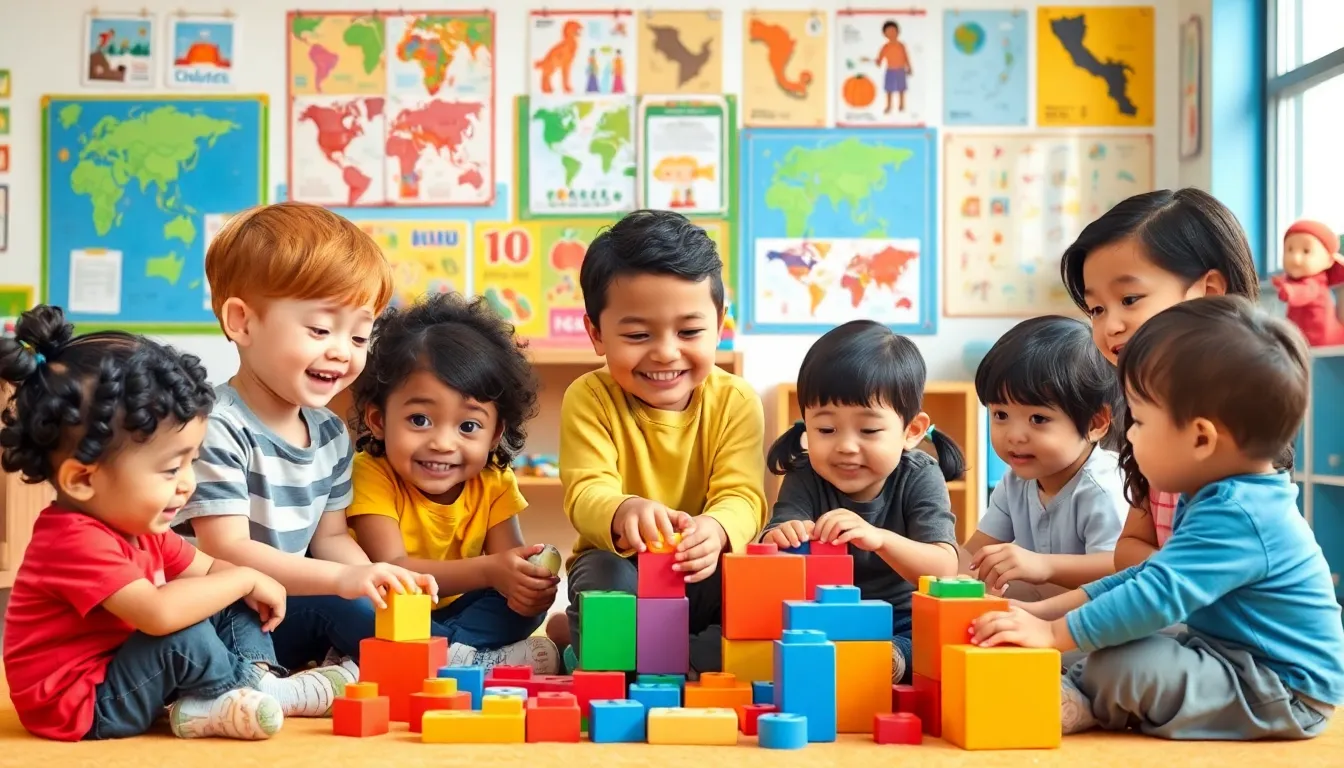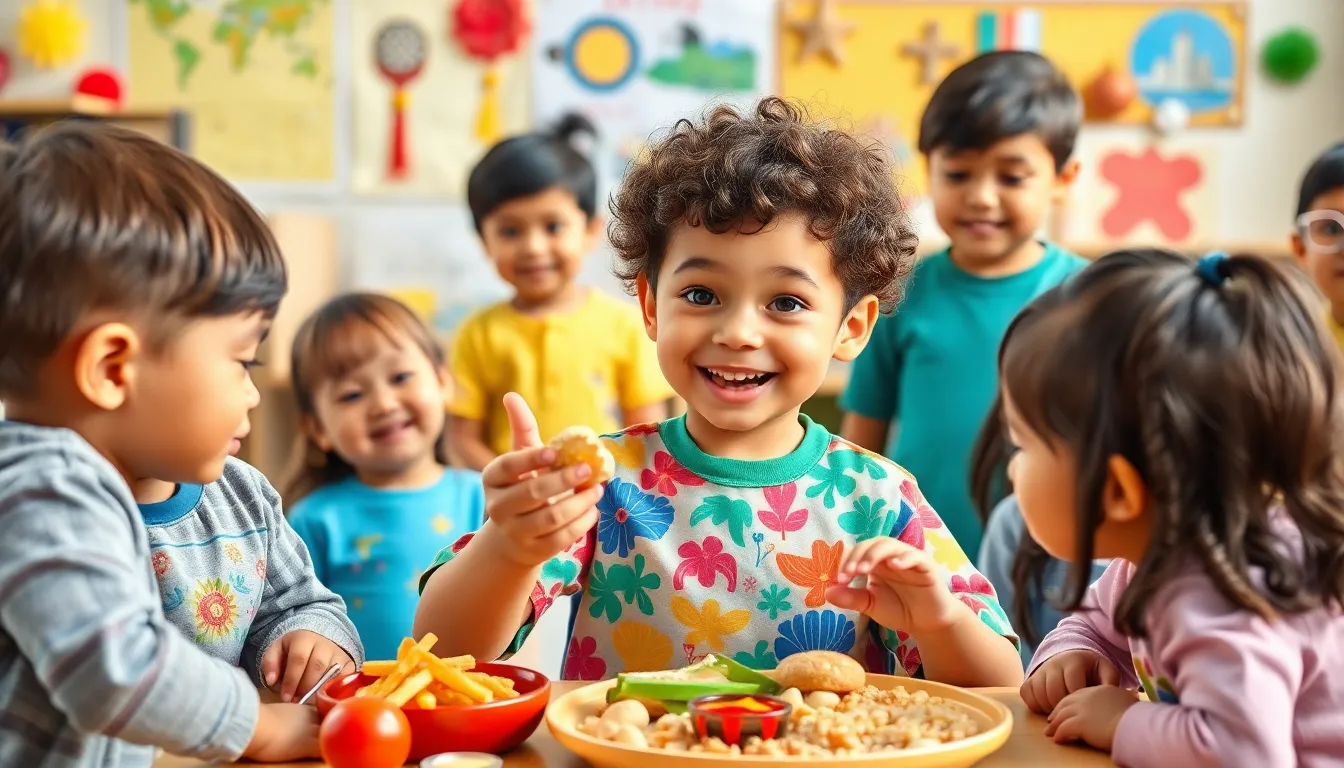In today’s ever-shrinking world, preschool isn’t just about finger painting and snack time—it’s a vibrant tapestry of cultures waiting to be explored. Imagine a classroom where kids share stories from their heritage, swap lunchbox treats from around the globe, and learn to say “hello” in a dozen languages. Cultural diversity in preschool isn’t just a buzzword; it’s the secret ingredient to fostering empathy, creativity, and understanding from a young age.
As little ones dive into a melting pot of traditions, they develop a sense of belonging and appreciation for differences. Plus, what could be more entertaining than a group of toddlers trying to pronounce “Sanskrit” while munching on sushi? Embracing cultural diversity in early education sets the stage for a future where acceptance and collaboration thrive. So let’s explore why this colorful blend of backgrounds is essential for shaping the next generation of global citizens.
Table of Contents
ToggleUnderstanding Cultural Diversity in Preschool
Cultural diversity in preschool refers to the variety of cultural backgrounds present within a classroom setting. This includes differences in ethnicity, language, traditions, and values. Each child’s unique experiences contribute to a rich learning environment. Exposure to diverse cultures encourages children to embrace and respect differences, shaping their social interactions.
Definition of Cultural Diversity
Cultural diversity embodies the different cultural identities and practices found in a community. In preschool, this diversity includes variations in language, customs, and family structures. Different cultural perspectives influence children’s worldview and play a vital role in their socialization. Understanding these definitions allows educators to create inclusive environments that reflect the communities they serve.
Importance of Cultural Diversity in Early Education
Cultural diversity significantly enhances early education experiences. Engaging with diverse cultures broadens children’s understanding and acceptance of others. It promotes empathy by allowing kids to see the world through different lenses. Education programs that celebrate these differences foster creativity and critical thinking. Inclusive practices also prepare children for future interactions with a global society.
Benefits of Embracing Cultural Diversity

Embracing cultural diversity in preschool offers significant advantages for children’s development. It promotes a richer learning environment that benefits everyone involved.
Social Skills Development
Children enhance their social skills through interactions with peers from various cultural backgrounds. Exposure to different traditions and customs helps them develop empathy and respect for others. They learn to collaborate in diverse groups, which cultivates stronger communication skills. Engaging with classmates who celebrate different holidays or speak multiple languages encourages inclusivity. As children share their unique stories and experiences, they build friendships based on understanding. In turn, these social interactions prepare them for future relationships and teamwork in their academic journey and beyond.
Cognitive Growth
Cultural diversity also contributes to children’s cognitive growth. Encountering various perspectives stimulates critical thinking and problem-solving skills. Sharing diverse experiences encourages curiosity, prompting children to ask questions and explore new ideas. Learning about different cultures fosters creativity as children draw connections among their knowledge. Exposure to new languages enhances cognitive flexibility and memory capabilities. As children navigate various cultural norms, they develop adaptability, essential for future learning environments. The richness in ideas and practices shapes their understanding of the world.
Strategies for Promoting Cultural Diversity
Promoting cultural diversity in preschool requires intentional strategies that foster inclusion and understanding. These approaches help create a supportive environment where children can thrive.
Inclusive Curriculum Practices
Inclusive curriculum practices enhance children’s exposure to various cultures. Educators can integrate multicultural stories and folktales into lesson plans, providing different perspectives. Activities such as international art projects promote creativity while reflecting diverse traditions. Utilizing languages spoken by children in the classroom deepens connections and showcases linguistic diversity. Additionally, celebrating cultural holidays allows children to experience customs and practices firsthand. These practices not only enrich learning experiences but also encourage respect for differing backgrounds.
Engaging Families and Communities
Engaging families and communities strengthens cultural awareness within the preschool environment. Schools can host multicultural events where families share their traditions, food, and music. Collaborating with community organizations offers resources and support for educators, enhancing cultural programming. Creating a family resource center encourages parents to contribute materials that represent their cultures. Involving families in class discussions fosters a sense of community and belonging among children. When families actively participate, they not only enrich the preschool experience but also reinforce cultural pride and understanding.
Challenges in Implementing Cultural Diversity
Implementing cultural diversity in preschool presents several challenges. Educators often encounter resistance from stakeholders when it comes to new methods.
Resistance to Change
Resistance to change manifests in various forms within preschool settings. Some educators may feel uncomfortable adapting established curricula to include diverse perspectives. Parents might express concerns about unfamiliar practices affecting their children’s education. Cultural misunderstandings can also arise, leading to apprehension about discussing sensitive topics. Overcoming these hurdles requires ongoing dialogue and professional development to promote awareness and acceptance. Strategies such as community forums and workshops can provide valuable education while addressing concerns of resistance.
Resource Limitations
Resource limitations pose another significant challenge in promoting cultural diversity. Many preschools lack access to diverse teaching materials and cultural resources. Insufficient funding restricts the ability to host multicultural events and activities. Teacher training on cultural competency often receives inadequate attention in program budgets. These constraints hinder the effective integration of cultural diversity into the curriculum. Partnerships with local organizations can provide additional resources and support, allowing educators to enrich the learning environment despite financial limitations.
Embracing cultural diversity in preschool is essential for nurturing well-rounded individuals. By fostering an inclusive environment, educators can help children develop empathy and respect for one another. These foundational skills not only enhance social interactions but also prepare young learners for a diverse world.
As preschools implement strategies to celebrate various cultures, they create enriching experiences that promote curiosity and creativity. Engaging families and communities further strengthens these initiatives, ensuring that children feel valued and understood. Overcoming challenges in resource allocation and training is vital for sustaining these efforts.
Ultimately, prioritizing cultural diversity in early education sets the stage for future collaboration and acceptance among global citizens. By investing in this approach, preschools play a crucial role in shaping a more inclusive society.



